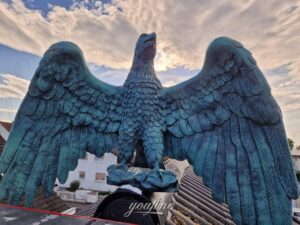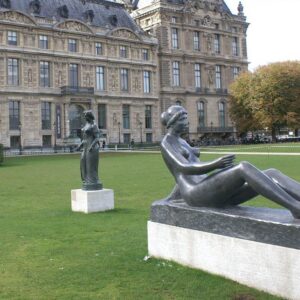For centuries, marble statues have stood as timeless symbols of artistic achievement, cultural identity, and religious devotion. Among these, the ancient Greek statues of gods hold a particularly prominent place. These works of art, carved with meticulous precision and imbued with profound symbolism, reflect not only the technical prowess of Greek sculptors but also the spiritual and philosophical ideals of their civilization.

The Pantheon of Greek Gods in Marble
Ancient Greek marble statues brought to life the personalities and attributes of the gods they represented. Let’s explore some of the most iconic deities immortalized in marble:
Zeus
Known as the king of the gods, Zeus was often depicted as a powerful and majestic figure. Statues of Zeus commonly portray him seated on a throne, holding a scepter and a thunderbolt, symbols of his authority over the heavens and earth. The statue of Zeus at Olympia, crafted by Phidias, stood as a testament to his might and grandeur and was one of the Seven Wonders of the Ancient World.
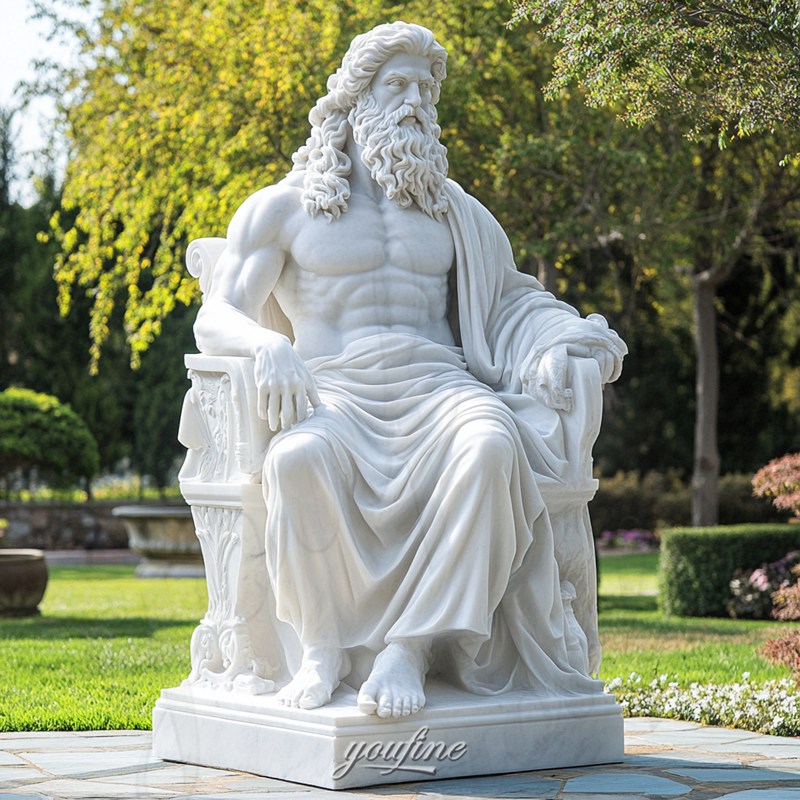
Athena
The goddess of wisdom, war, and strategy, Athena was a favorite subject of Greek sculptors. Statues of Athena often featured her in full armor, with a helmet, shield, and spear, embodying both intelligence and strength. The Athena Parthenos, a colossal gold-and-ivory statue by Phidias, once stood in the Parthenon and remains one of the most celebrated depictions of the goddess.

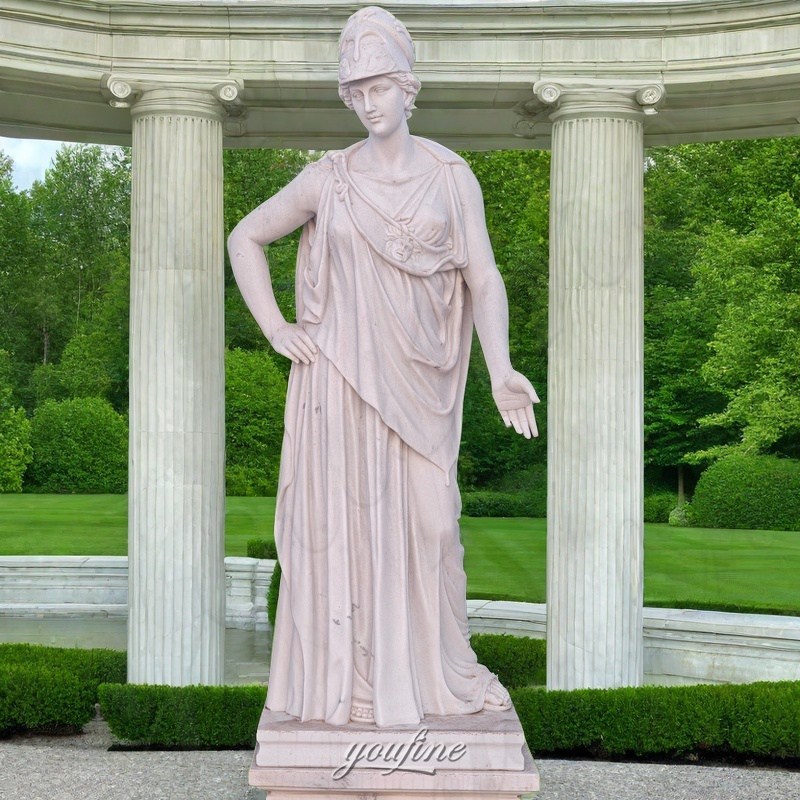
Apollo
Apollo, the god of music, poetry, and the sun, was often represented as the epitome of youthful beauty and harmony. Statues of Apollo frequently showed him with a lyre or a bow, emphasizing his dual roles as a patron of the arts and a protector. The “Apollo Belvedere,” a Roman copy of a Greek original, continues to captivate audiences with its elegance and poise.

Aphrodite
As the goddess of love and beauty, Aphrodite’s statues exude grace and sensuality. One of the most famous sculptures is the “Aphrodite of Knidos” by Praxiteles, which broke new ground by depicting the goddess in the nude. This statue became a symbol of divine beauty and influenced countless works in Western art.
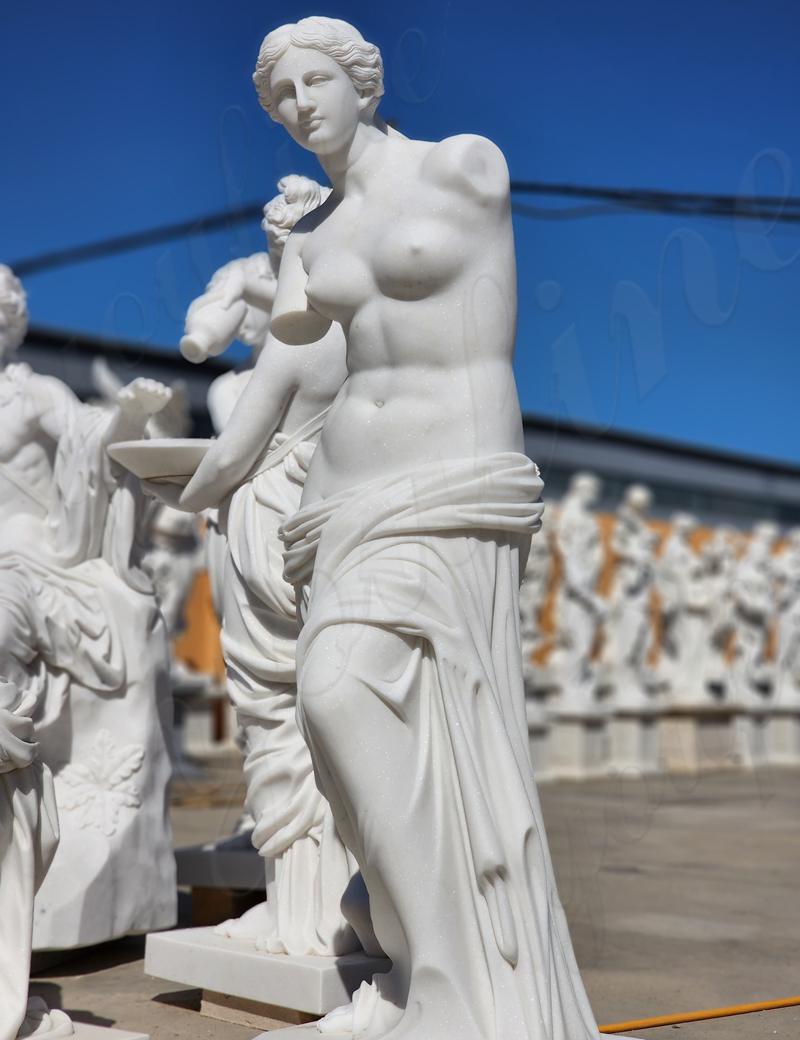
Poseidon
The god of the sea, Poseidon, was often depicted holding a trident, his signature weapon. Statues of Poseidon, such as the bronze “Artemision Zeus or Poseidon,” showcase his commanding presence and connection to the maritime world, a vital aspect of Greek life.
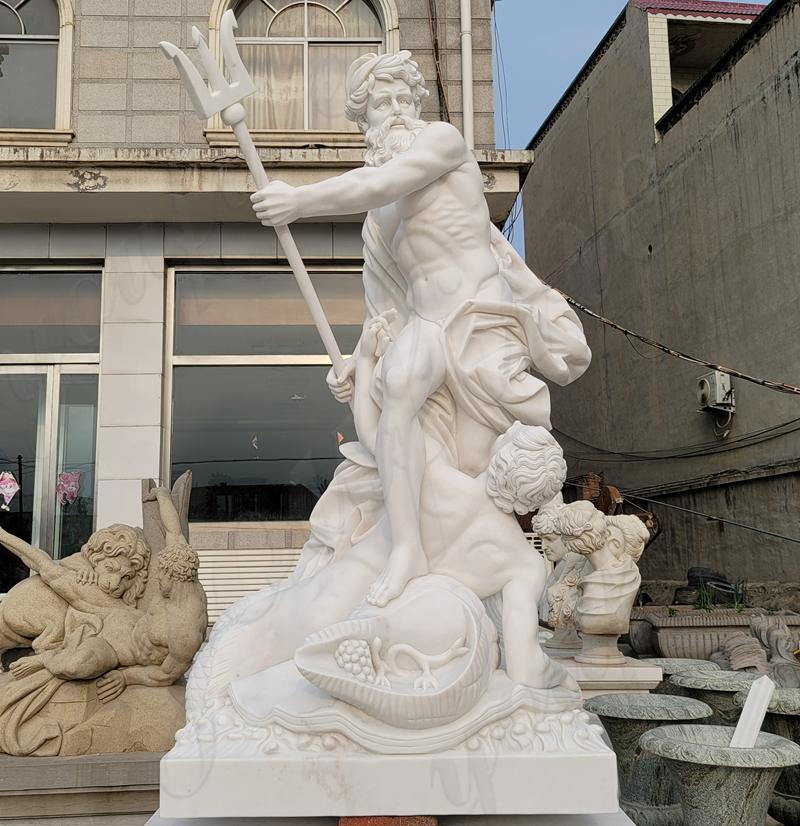
Artemis
Artemis, the goddess of the hunt and wilderness, was frequently shown with a bow and quiver, accompanied by a stag or hunting dog. Her statues captured her dual nature as both a fierce protector and a nurturer of nature.

Hera
As the queen of the gods and goddess of marriage, Hera was often depicted with a regal and dignified bearing. Her statues commonly include a scepter and a diadem, underscoring her status as a divine matron and protector of women. Hera’s depictions emphasize her role as a powerful and enduring figure in Greek mythology.
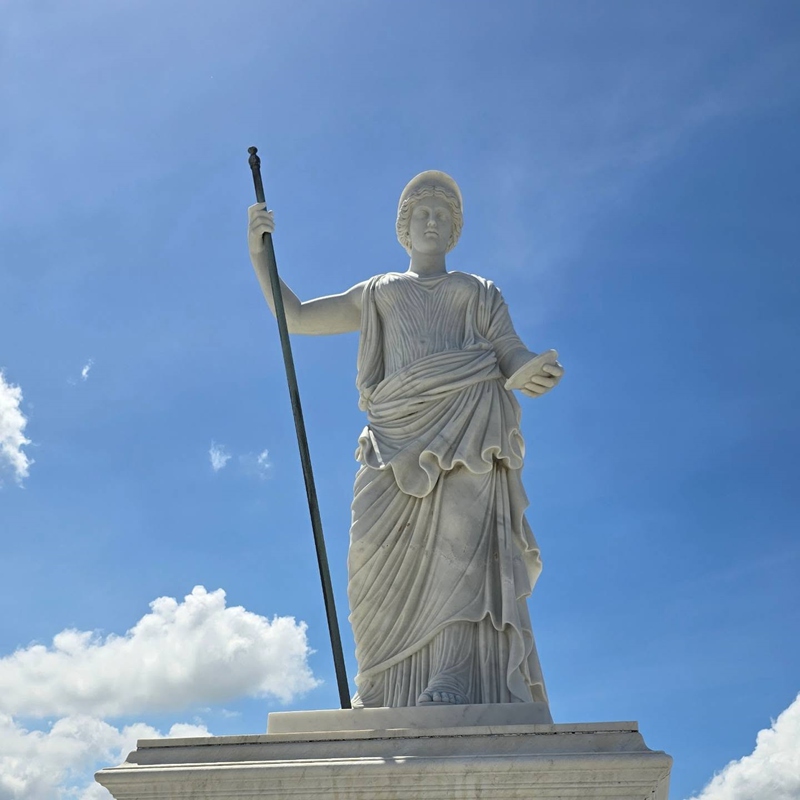
Hermes
The messenger of the gods, Hermes, was a symbol of agility and communication. Statues of Hermes often portray him with winged sandals and a caduceus, a staff entwined with serpents. Praxiteles’s “Hermes and the Infant Dionysus” is one of the most notable representations, showcasing Hermes’s protective and graceful demeanor.

Dionysus
Dionysus, the god of wine, festivity, and theater, was often depicted in a relaxed and celebratory pose. Statues of Dionysus sometimes include grapevines, a thyrsus (a fennel staff), or a leopard skin, emphasizing his connection to revelry and the natural world. His sculptures embody the joy and spontaneity associated with his domain.
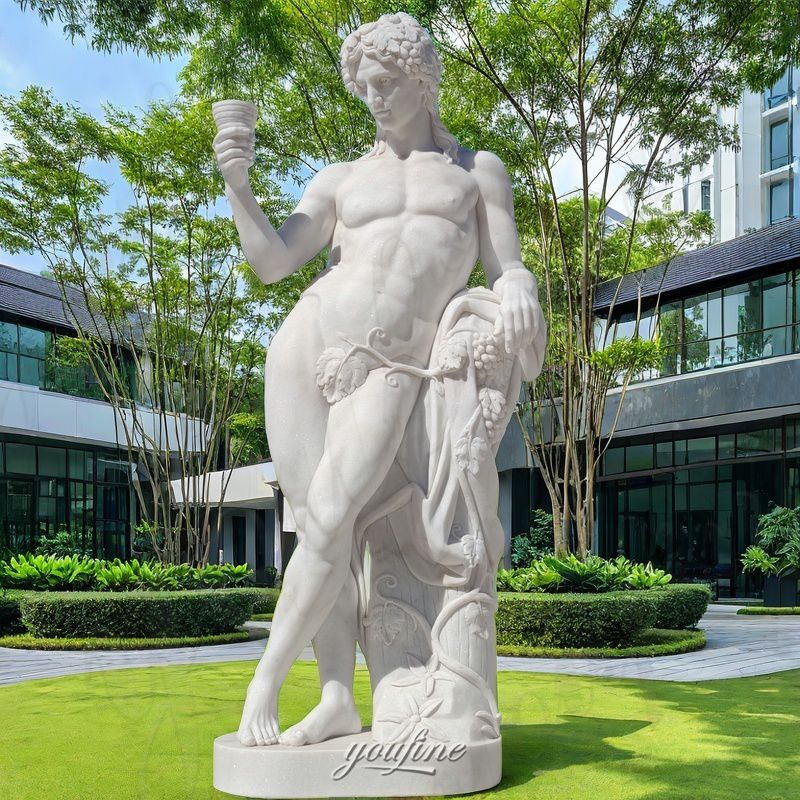
Hades
The god of the underworld, Hades, was typically portrayed with a solemn and imposing presence. His statues often include Cerberus, the three-headed dog, as a companion, emphasizing his dominion over the realm of the dead. Despite his fearsome role, depictions of Hades often highlight his fairness and authority.

Faun Barberini
The marble statue of Faun Barberini is an artwork from the ancient Greek and Roman period, now in a museum in Berlin, Germany. The statue depicts a half-human, half-animal character, Faun, who is the god of nature in ancient mythology. Faun in the statue is in a relaxed posture, showing a charming, half-intoxicated state, giving people a sense of romance and mystery. His detailed facial expression and realistic muscle lines show the superb skills of ancient sculptors. The proportions of the statue are consistent with the human body, reflecting an in-depth study of the human form, especially in the expressive display of muscles and body movements. Faun Barberini is not only a classic representative of ancient sculpture art, but also a profound depiction of the interweaving of human nature, nature and mythology.
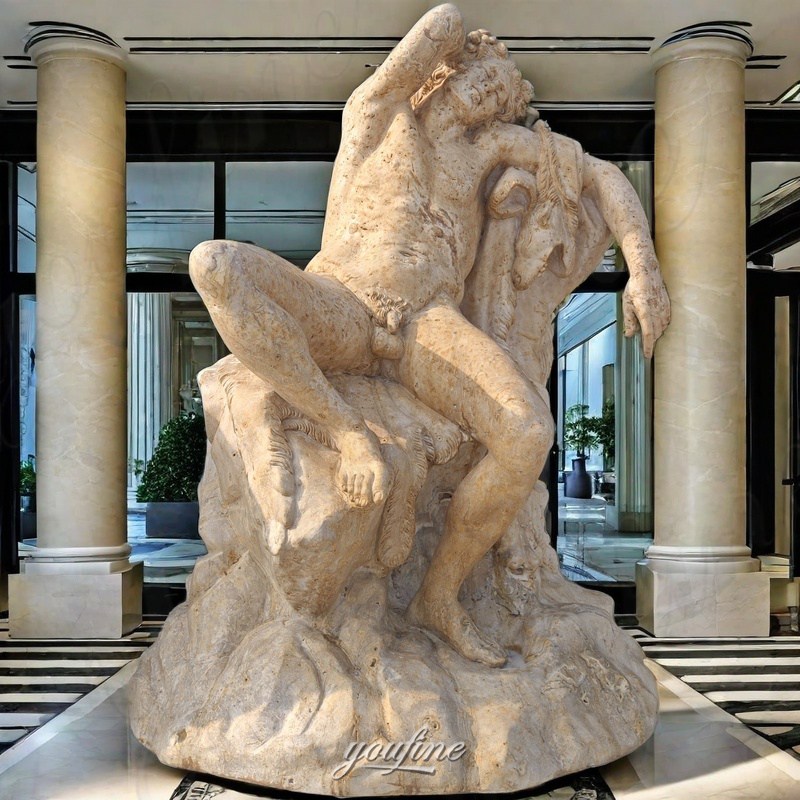
The Influence of Marble Statues
The impact of ancient Greek marble statues extends far beyond their historical context. These sculptures influenced the Roman Empire, which adopted and adapted Greek techniques and styles. Many original Greek statues survive today only as Roman copies, yet their essence continues to inspire.
During the Renaissance, artists like Michelangelo and Donatello drew heavily from Greek sculptures, reigniting an appreciation for classical ideals. The precision and beauty of ancient marble statues informed their masterpieces, such as Michelangelo’s “David” and Donatello’s “St. George.” Even in modern times, Greek statuary remains a benchmark for excellence in sculpture.
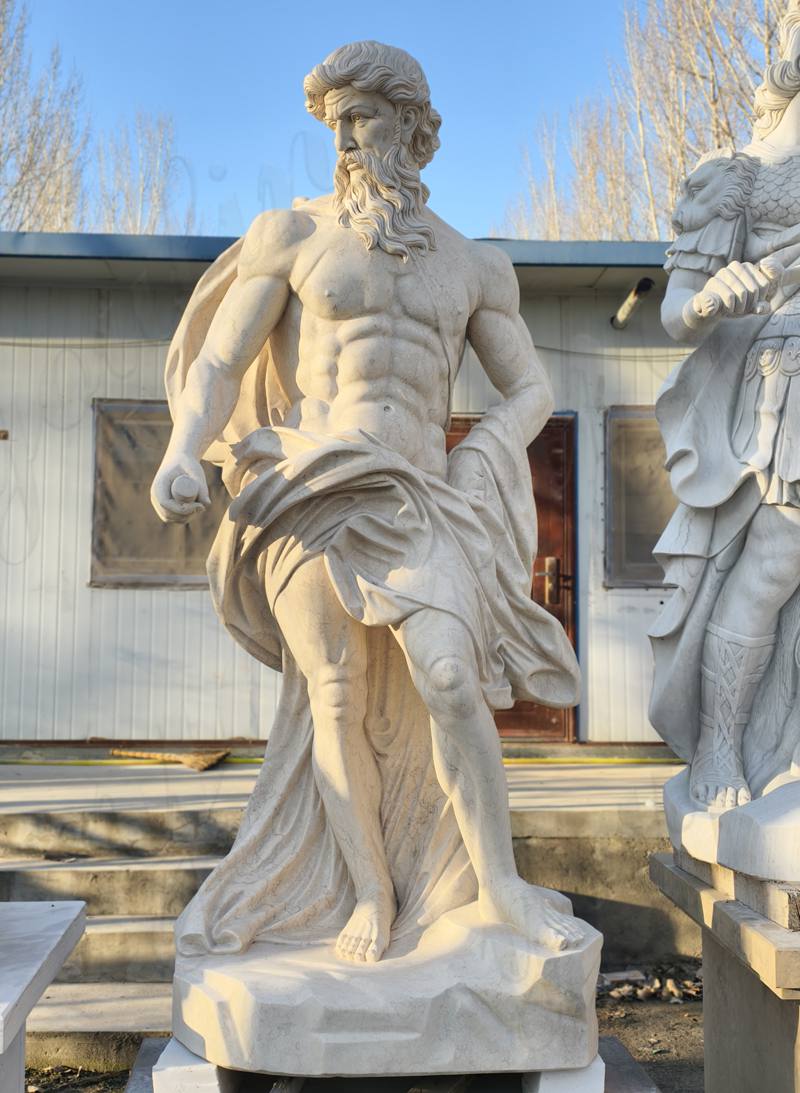
In Conclusion
At our sculpture, we draw inspiration from the timeless artistry of ancient Greece. Whether crafting custom marble statues or replicating classical designs, we strive to honor the legacy of these masterpieces while offering contemporary interpretations for modern spaces. The spirit of ancient Greek sculpture lives on, reminding us of the enduring power of art to bridge the past and the present.
If you are inspired by the grandeur of ancient Greek marble statues and wish to bring a piece of this legacy into your space, YouFine Sculpture is here to help. With decades of expertise, we specialize in creating custom sculptures that echo the splendor of classical art. Visit our website at www.you-fine.com or contact us today to discuss your project. Let’s create something extraordinary together.

